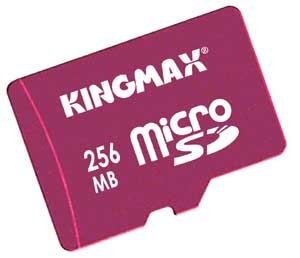
Mobile phones today are the symbols of the modern mobile digital lifestyle,
of which memory cards are an increasingly important element. Memory cards
have evolved from the early MMC and SD cards to the second-generation miniSD
and RS-MMC specifications, growing smaller, lighter and thinner while providing
ever increasing storage and flexibility for digital products. The third-generation
microSD cards have taken this evolution to the next step: nearly the size
of a fingernail (15mm×11mm×1mm), microSD cards are now the world's smallest
memory card products.
In 2005, the SD association announced the microSD specification, the newest
member of the SD family. microSD is 100% compatible with the earlier T-flash
format, and due to its extremely small size, microSD has quickly gained popularity
among mobile phone makers seeking a smaller storage medium. These factors
have resulted in explosive growth in phone products that support the microSD
specification. Major manufacturers including Motorola, Samsung and LG have
all released microSD-compatible mobile phones, and according to the latest
“2005 Mobile Storage Products Research Report,” microSD (including T-Flash)
products accounted for 29.5% of the market share of mobile phones with memory
card support. Compared to two other mini memory card formats – miniSD and
RS-MMC – microSD's market share was 1.6 and 10.5 percentage points higher.
The microSD format will clearly continue to take the mobile phone memory market
by storm.
However, unlike larger cards such as SD or MMC cards, microSD's surface area
restrictions make it impossible to use SMT production (the most common manufacturing
method for flash memory cards). microSD cards must be produced using direct
die packaging technology. Kingmax is one of the world's only memory manufacturers
that possess IC packaging facilities, and Kingmax is also the world's leading
manufacturer of PIP packaged memory products. When used with very small surface
area memory cards, PIP packaging provides incomparable performance and value.
In addition to water and dust resistance (as well as heat and pressure resistance),
microSD's main advantage lies its tiny size. At the same time, the PIP packaging
technology enables Kingmax to apply its distinctive red color, which allows
consumers to know at first glance their products are genuine Kingmax memory
products.
Stacking technology is another complication for manufacturing microSD products,
especially high capacity products. Because of microSD's extremely small size,
currently all microSD products are produced using stacking technology. Higher
capacity cards such as the 512MB microSD cards are produced by stacking two
70-nanometer 256MB flash chips. Circuit paths are already quite complicated
in such a small area, and stacking two ICs makes the process even more complicated.
Therefore, memory makers lacking IC packaging technology face many difficulties
producing this type of memory card, and it is precisely this technology that
makes Kingmax one of the world's only companies who can provide a stable supply.
With its patented PIP packaging technology and outstanding quality and compatibility,
it is no wonder that Kingmax products are the most widely respected by electronics
manufacturers and consumers alike.
Many of the world's major mobile phone manufacturers have taken notice of
the Kingmax microSD cards and Kingmax has already begun receiving large orders
and forming partnerships to supply microSD cards to mobile phone companies
around the world. Through these partnerships, Kingmax will bring an all-new
mobile multimedia experience to consumers the world over.
News Source: Kingmax Press Release
Links